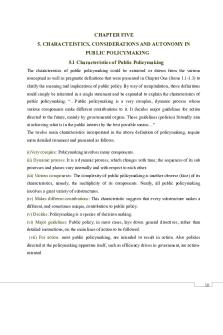Burglary (PO) - Lecture 10 PDF

| Title | Burglary (PO) - Lecture 10 |
|---|---|
| Author | Muhammad Talha Mushtaq Ghick |
| Course | Criminal law |
| Institution | University of London |
| Pages | 2 |
| File Size | 89.9 KB |
| File Type | |
| Total Downloads | 450 |
| Total Views | 841 |
Summary
Property Offence: Burglary 2013Burglary: Section 9 Theft Act 1968 creates two offences of burglary, namely: S (1) (a) – D is guilty on entry to a building or part of as a trespasser if he intends to steal, inflict GBH, or cause criminal damage with the situation where D intends to commit an offence ...
Description
Property Offence: Burglary 2013 Burglary: Section 9 Theft Act 1968 creates two offences of burglary, namely: S.9 (1) (a) – D is guilty on entry to a building or part of as a trespasser if he intends to steal, inflict GBH, or cause criminal damage. Deals with the situation where D intends to commit an offence of theft, GBH, or criminal damage at the time he enters the building. The actual commission of one of the offences is not essential to conviction and thus broader. S.9 (1) (b) – Having entered a building or part of as a trespasser, D is guilty if he then commits theft or attempts to do so. Deals with the situation where, after having entered the building or part of it, D thereafter commits or attempts to commit either theft or GBH (no criminal damage and thus narrower). Actus Reus: 1. ‘Entry’ – The D’s whole body need not be in the building for there to be an entry. What amounts to an entry is a question of fact for the jury. Insertion of part of the body is sufficient if it is ‘effective and substantial’. See: R v Collins [1972], R v Brown [1985], and R v Ryan [1996]. 2. ‘As a trespasser’ – The law requires the D to know he is a trespasser or be reckless to that fact. A trespasser is someone who enters land without permission of the person in possession of the land, or without the consent of the intended victim of the ulterior offence.
D may become a trespasser even when he has permission to enter if he exceeds the licence. Consent to entry is vitiated where the consent is obtained by deception, and so D will be a trespasser in such a case. See: R v Collins [1973] and R v Jones and Smith [1976]. 3. ‘Any part of the building’ – Includes all dwellings and inhabited vehicles or vessels. It is clear that to be a building the structure must have some degree of permanence. See: B & S v Leathley [1979] and R v Walkington [1979]. 4. ‘Commission of the ulterior offence’ – S.9 (1) (b) ONLY – The prosecution must go on to show the AR of either theft, attempted theft, GBH, or attempted GBH. Mens Rea: 1. ‘Intentional or reckless trespass’ – The D knew he was trespassing or realisation of this. For a charge under S.9 (1) (a) this MR must exist at the time of entry, whilst for S.9 (1) (b) it must be at the time of the ulterior offence.
1
Criminal Law – Year 2!
Property Offence: Burglary 2013 2. ‘Intent to commit ulterior offence’ – S.9 (1) (a) ONLY – The intention element is sufficient. 3. ‘Mens Rea of the ulterior offence’ – S.9 (1) (b) ONLY – The MR of the mini offence must be proven.
Aggravated Burglary: Section 10 Theft Act 1968 provides: ‘…A person is guilty of aggravated burglary if he commits any burglary and at the time has with hi any firearm, or imitation of firearm, any weapon of offence, or any explosive for this purpose…’
Firearm or imitation = S.10 (1) (a) Weapon of offence = S.10 (1) (b) Explosive = S.10 (1) (c)
1. At the time – This means when the offence is committed. See: R v O’Leary 2. Has with him – Knowingly has with him. Mens Rea is for Burglary, and intention to use. See: R v Stones and R v Kelly.
2
Criminal Law – Year 2!...
Similar Free PDFs

Burglary (PO) - Lecture 10
- 2 Pages

Robbery (PO) - Lecture 9
- 1 Pages

Burglary - Definition
- 2 Pages

AK PO - PO aard
- 13 Pages

ENT 10 Intro sce po 10 de 10
- 11 Pages

GRe Merk PO 10 (Art. 8 GG)
- 2 Pages

Burglary 1st year
- 7 Pages

Theft and burglary - coursework
- 6 Pages

MBA 1 - Lecture notes kjnopk´po+´}
- 20 Pages

PO Opracowanie
- 27 Pages
Popular Institutions
- Tinajero National High School - Annex
- Politeknik Caltex Riau
- Yokohama City University
- SGT University
- University of Al-Qadisiyah
- Divine Word College of Vigan
- Techniek College Rotterdam
- Universidade de Santiago
- Universiti Teknologi MARA Cawangan Johor Kampus Pasir Gudang
- Poltekkes Kemenkes Yogyakarta
- Baguio City National High School
- Colegio san marcos
- preparatoria uno
- Centro de Bachillerato Tecnológico Industrial y de Servicios No. 107
- Dalian Maritime University
- Quang Trung Secondary School
- Colegio Tecnológico en Informática
- Corporación Regional de Educación Superior
- Grupo CEDVA
- Dar Al Uloom University
- Centro de Estudios Preuniversitarios de la Universidad Nacional de Ingeniería
- 上智大学
- Aakash International School, Nuna Majara
- San Felipe Neri Catholic School
- Kang Chiao International School - New Taipei City
- Misamis Occidental National High School
- Institución Educativa Escuela Normal Juan Ladrilleros
- Kolehiyo ng Pantukan
- Batanes State College
- Instituto Continental
- Sekolah Menengah Kejuruan Kesehatan Kaltara (Tarakan)
- Colegio de La Inmaculada Concepcion - Cebu





